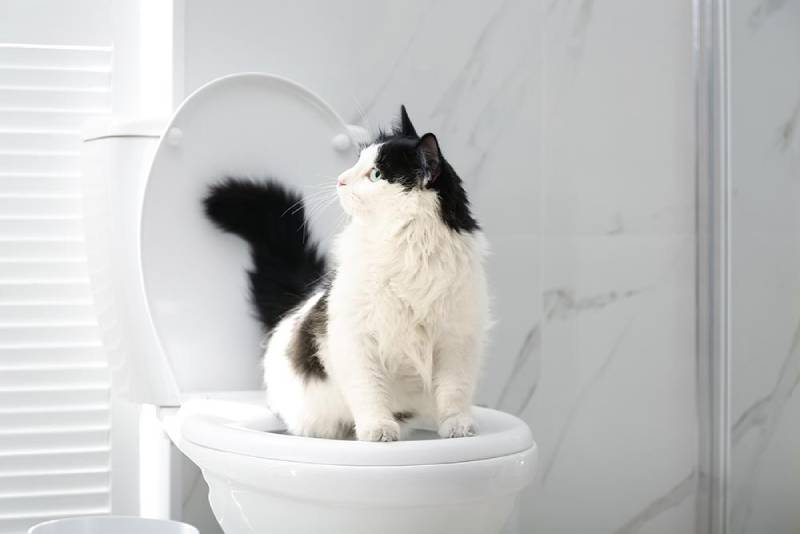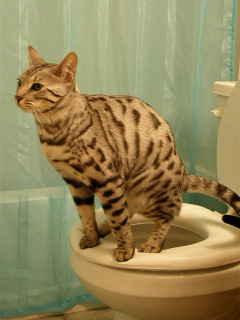Why Flushing Cat Poop Down Your Toilet Is Harmful - Tips for Correct Disposal
Why Flushing Cat Poop Down Your Toilet Is Harmful - Tips for Correct Disposal
Blog Article
This article in the next paragraphs relating to Can You Flush Cat Poo or Litter Down the Toilet? is indeed engaging. Don't miss it.

Introduction
As pet cat proprietors, it's necessary to bear in mind exactly how we deal with our feline close friends' waste. While it may appear practical to purge cat poop down the commode, this practice can have damaging consequences for both the atmosphere and human wellness.
Alternatives to Flushing
Thankfully, there are more secure and more liable ways to get rid of pet cat poop. Consider the following options:
1. Scoop and Dispose in Trash
One of the most usual method of dealing with pet cat poop is to scoop it into a biodegradable bag and toss it in the trash. Be sure to use a specialized litter scoop and throw away the waste quickly.
2. Use Biodegradable Litter
Choose biodegradable feline clutter made from materials such as corn or wheat. These litters are eco-friendly and can be securely dealt with in the trash.
3. Bury in the Yard
If you have a lawn, take into consideration hiding pet cat waste in a designated area away from vegetable gardens and water sources. Be sure to dig deep enough to prevent contamination of groundwater.
4. Install a Pet Waste Disposal System
Buy a pet dog garbage disposal system especially created for feline waste. These systems utilize enzymes to break down the waste, decreasing odor and ecological effect.
Health Risks
Along with ecological issues, purging feline waste can also posture health and wellness risks to human beings. Feline feces might consist of Toxoplasma gondii, a parasite that can trigger toxoplasmosis-- a possibly extreme illness, particularly for expecting ladies and people with damaged body immune systems.
Ecological Impact
Purging cat poop introduces hazardous microorganisms and parasites into the supply of water, presenting a considerable danger to water environments. These pollutants can negatively impact aquatic life and concession water high quality.
Final thought
Responsible pet possession prolongs beyond providing food and shelter-- it additionally entails appropriate waste management. By refraining from purging cat poop down the commode and opting for different disposal methods, we can minimize our ecological footprint and shield human wellness.
Why Can’t I Flush Cat Poop?
It Spreads a Parasite
Cats are frequently infected with a parasite called toxoplasma gondii. The parasite causes an infection called toxoplasmosis. It is usually harmless to cats. The parasite only uses cat poop as a host for its eggs. Otherwise, the cat’s immune system usually keeps the infection at low enough levels to maintain its own health. But it does not stop the develop of eggs. These eggs are tiny and surprisingly tough. They may survive for a year before they begin to grow. But that’s the problem.
Our wastewater system is not designed to deal with toxoplasmosis eggs. Instead, most eggs will flush from your toilet into sewers and wastewater management plants. After the sewage is treated for many other harmful things in it, it is typically released into local rivers, lakes, or oceans. Here, the toxoplasmosis eggs can find new hosts, including starfish, crabs, otters, and many other wildlife. For many, this is a significant risk to their health. Toxoplasmosis can also end up infecting water sources that are important for agriculture, which means our deer, pigs, and sheep can get infected too.
Is There Risk to Humans?
There can be a risk to human life from flushing cat poop down the toilet. If you do so, the parasites from your cat’s poop can end up in shellfish, game animals, or livestock. If this meat is then served raw or undercooked, the people who eat it can get sick.
In fact, according to the CDC, 40 million people in the United States are infected with toxoplasma gondii. They get it from exposure to infected seafood, or from some kind of cat poop contamination, like drinking from a stream that is contaminated or touching anything that has come into contact with cat poop. That includes just cleaning a cat litter box.
Most people who get infected with these parasites will not develop any symptoms. However, for pregnant women or for those with compromised immune systems, the parasite can cause severe health problems.
How to Handle Cat Poop
The best way to handle cat poop is actually to clean the box more often. The eggs that the parasite sheds will not become active until one to five days after the cat poops. That means that if you clean daily, you’re much less likely to come into direct contact with infectious eggs.
That said, always dispose of cat poop in the garbage and not down the toilet. Wash your hands before and after you clean the litter box, and bring the bag of poop right outside to your garbage bins.
https://trenchlesssolutionsusa.com/why-cant-i-flush-cat-poop/

I found that piece on How to Dispose of Cat Poop and Litter Without Plastic Bags when doing a search on the web. Enjoyed our post? Please share it. Let others locate it. Thanks for your time. Don't hesitate to come visit our blog back soon.
Free Estimate Report this page